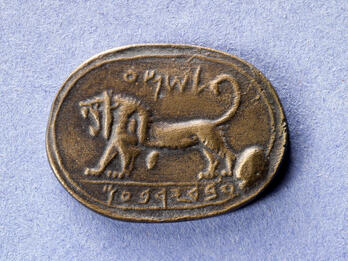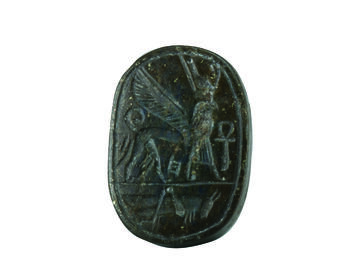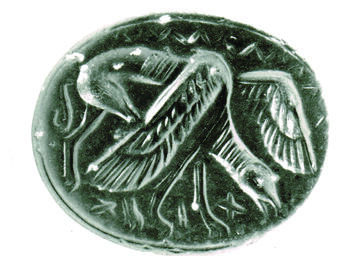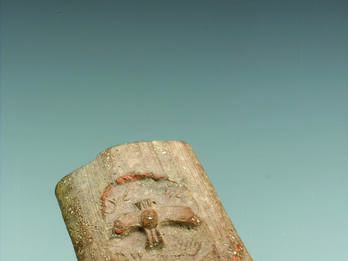Bulla of Shebanyahu Son of Samak, with Grazing Doe
Iron Age IIB, Late 8th Century BCE
Image

Engage with this Source
Related Guide
Visual Culture and Performing Arts in Ancient Israel
Biblical Period
Evidence for the material culture of ancient Israel comes mostly from artifacts and archaeology and attests to the influence of the great empires that surrounded Israel.
Related Guide
Provenance and Dating of Artifacts from the Biblical Period
Biblical Period
Artifacts help historians reconstruct the past, using layers of excavation to establish the chronology of the sites they excavate.
Related Guide
Israelite Inscriptions from the Biblical Period
Biblical Period
Even mundane inscriptions from the Hebrew Bible period offer valuable information about history, society, religion, economy, literacy, and much else.
You may also like

Seal of Shema, Servant of Jeroboam, with Lion
A large lion dominates this seal, appearing between the owner’s name (Shema) and his title (servant of Jeroboam). The lion’s jaws are open and its tail curves upward, making the animal appear larger…

Seal of Ḥaman (or Ḥiman), with Griffin and Locust
The upper register of this seal from Megiddo, made of black serpentine with white spots, has an image of a striding griffin wearing a kilt and an Egyptian double crown, with an Egyptian ankh symbol…

Seal with Grazing Griffin
The griffin on this black stone seal found in Jerusalem has a bovine body. Its wings are held out and down.

Lamelekh Seal Impression with Winged Sun Disk
Many of the seal impressions, with the inscription lamelekh “(Belonging, or pertaining) to the king,” followed by the name of a city, feature a two-winged figure, probably a winged sun disk…

Lamelekh Seal Impression with Four-winged Scarab Beetle
Some lamelekh impressions, like this one from Lachish, have a four-winged scarab beetle as their central image. The scarab beetle was an important mythological symbol in Egypt, associated with Khepri…

Seal with Four-winged Uraeus
This seal, found at the Western Wall plaza in Jerusalem, shows a uraeus or upright cobra with four wings. Modeled on the black-necked cobra that applies its venom both by biting and spitting, it was…

